Abstract
Baarda, I. F. (Iowa State University, Ames) and W. R. Lockhart. Characteristics and significance of the physiological patterns accompanying growth limitation. J. Bacteriol. 84:1085–1093. 1962.—The physiological characteristics of several related strains of Escherichia coli were studied during the transition from exponential growth to stationary phase in defined media with limiting concentrations of the carbon or nitrogen source. The metabolic changes typical of this transition, which often are set in motion before exhaustion of the limiting nutrient has occurred, appear to consist of a series of shifts in the relative emphasis placed on competing reaction sequences leading, respectively, to cell division, protoplasmic synthesis, or cell maintenance. This process of biochemical differentiation has characteristic patterns which are qualitatively distinct for particular limiting nutrients and quantitatively different among strains. Correlation of specific metabolic patterns with the characteristic values of certain growth constants for each strain permits hypotheses concerning the physiological significance of these constants.
Full text
PDF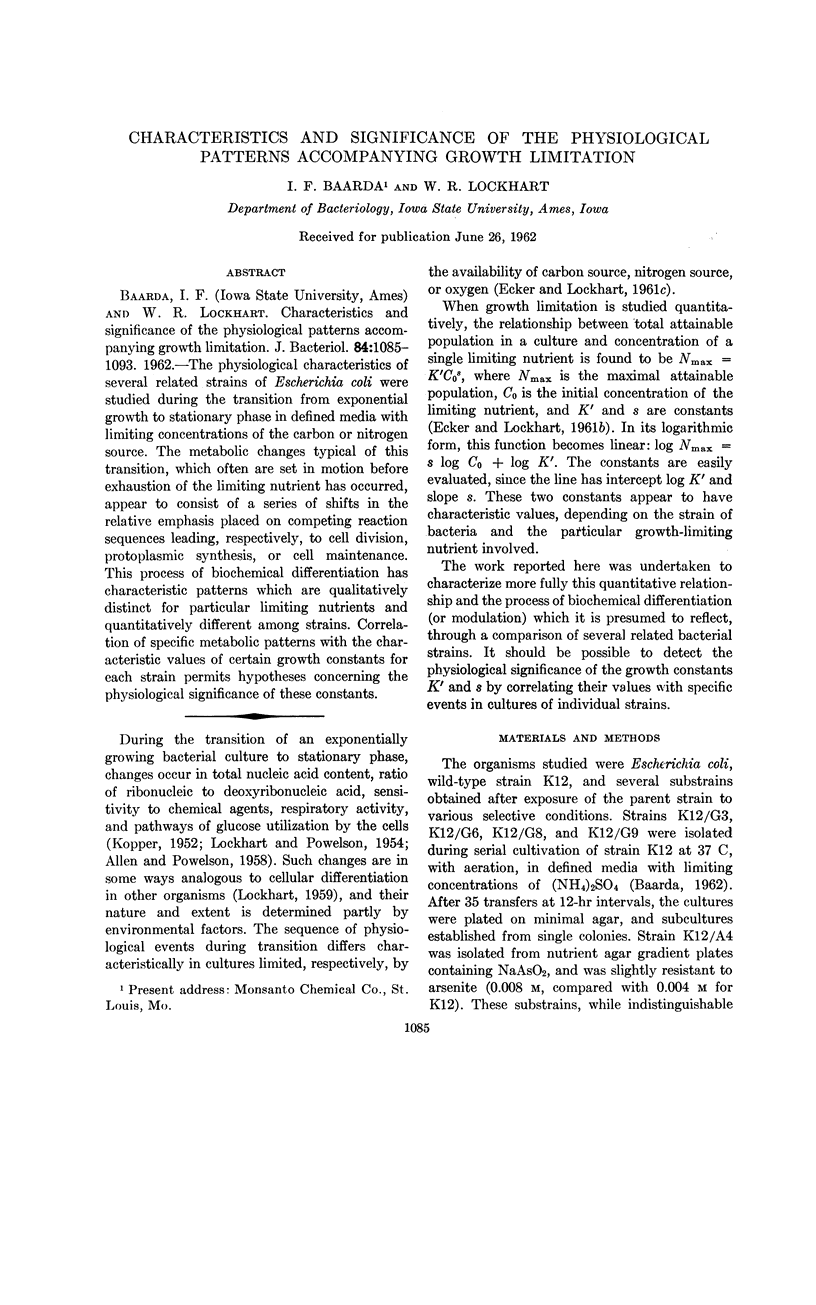
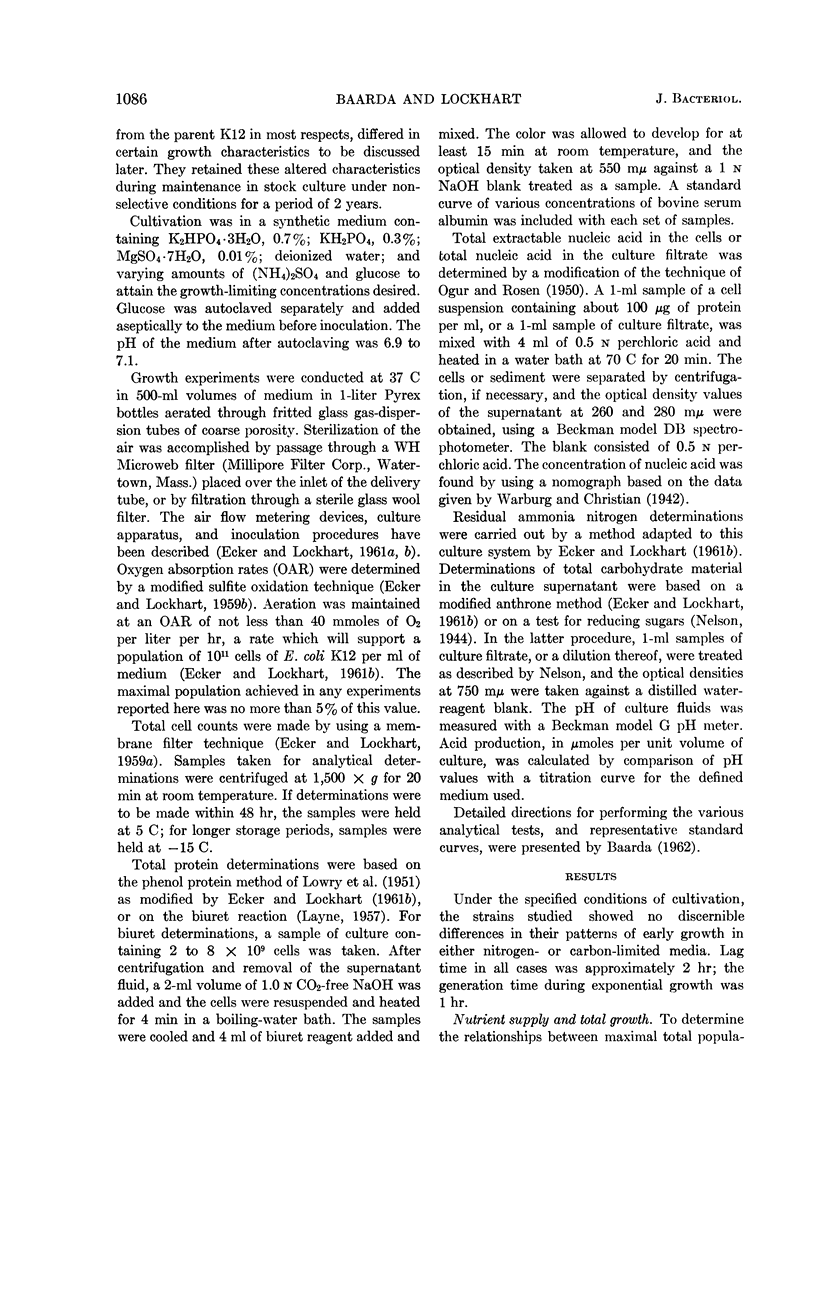
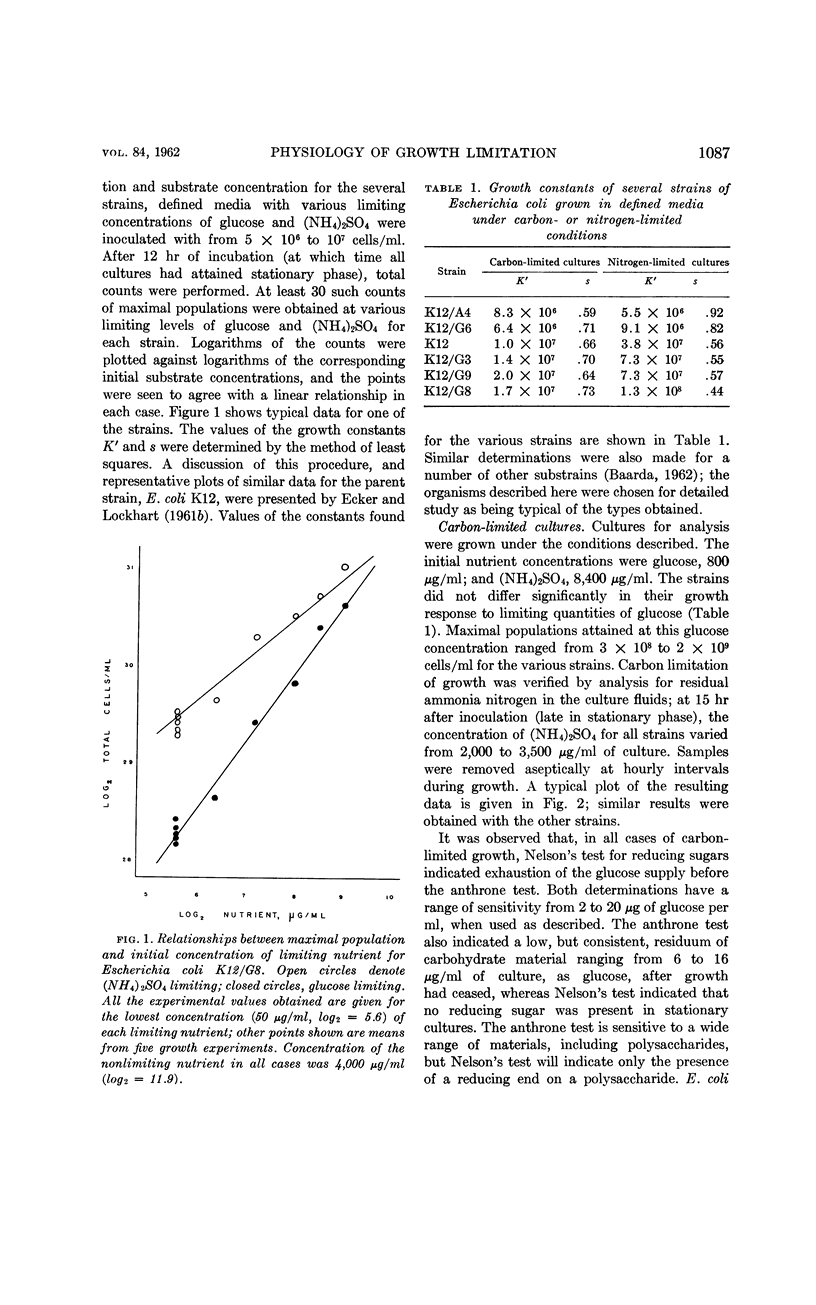
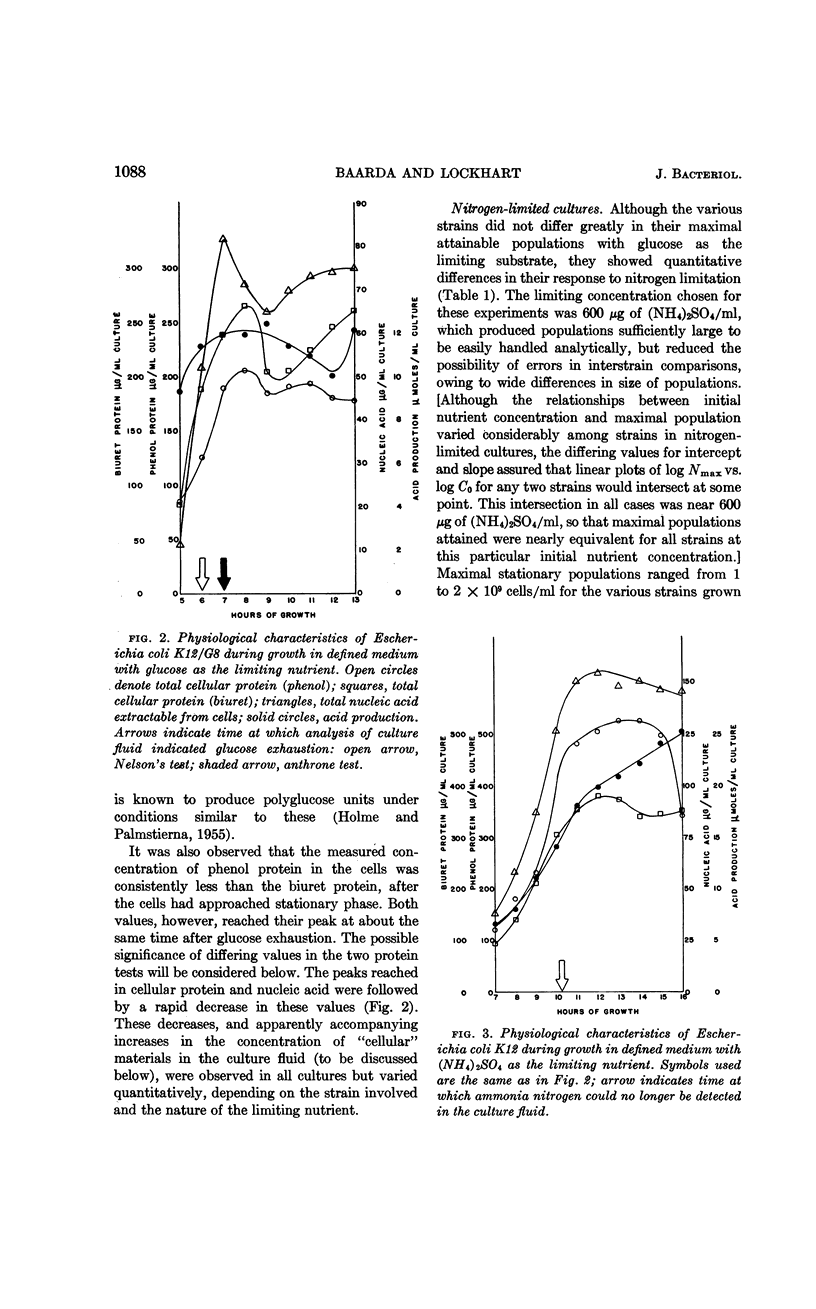
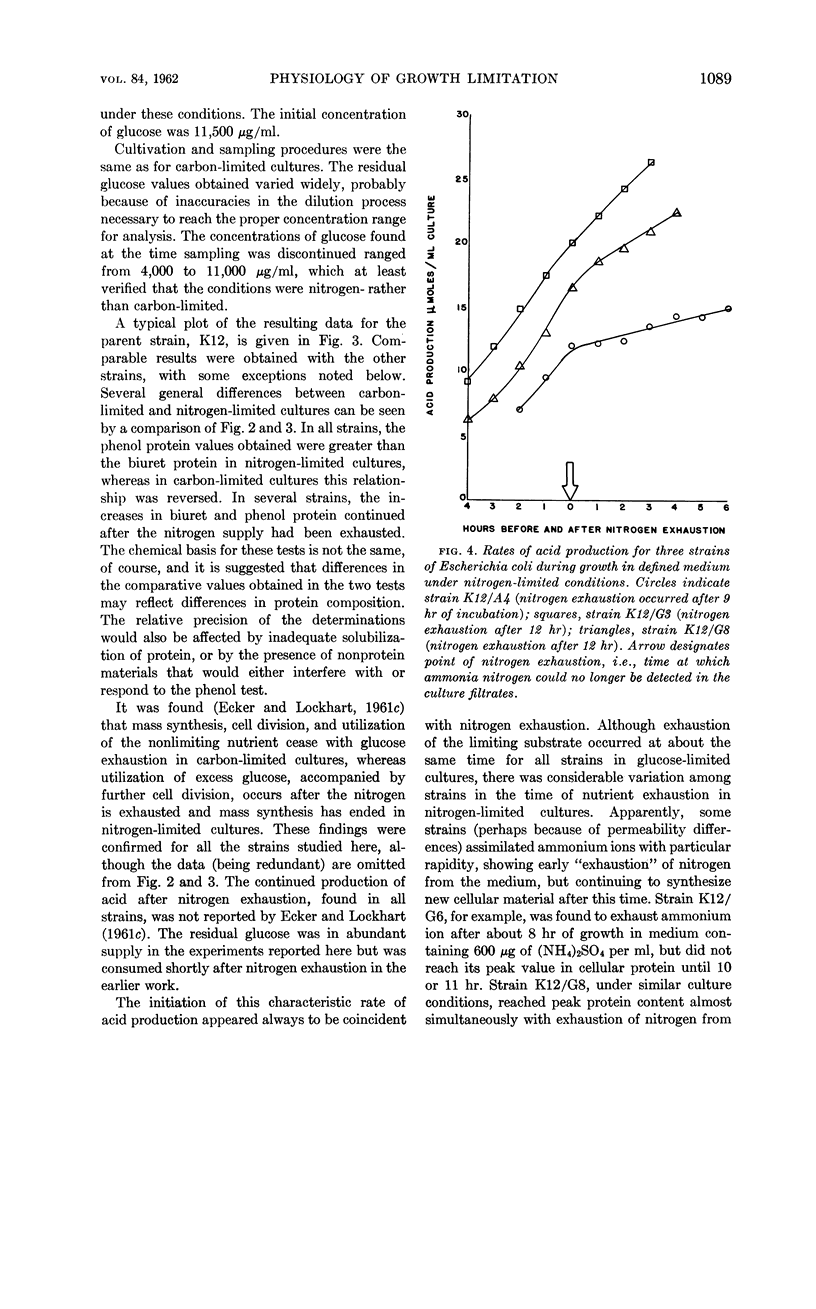
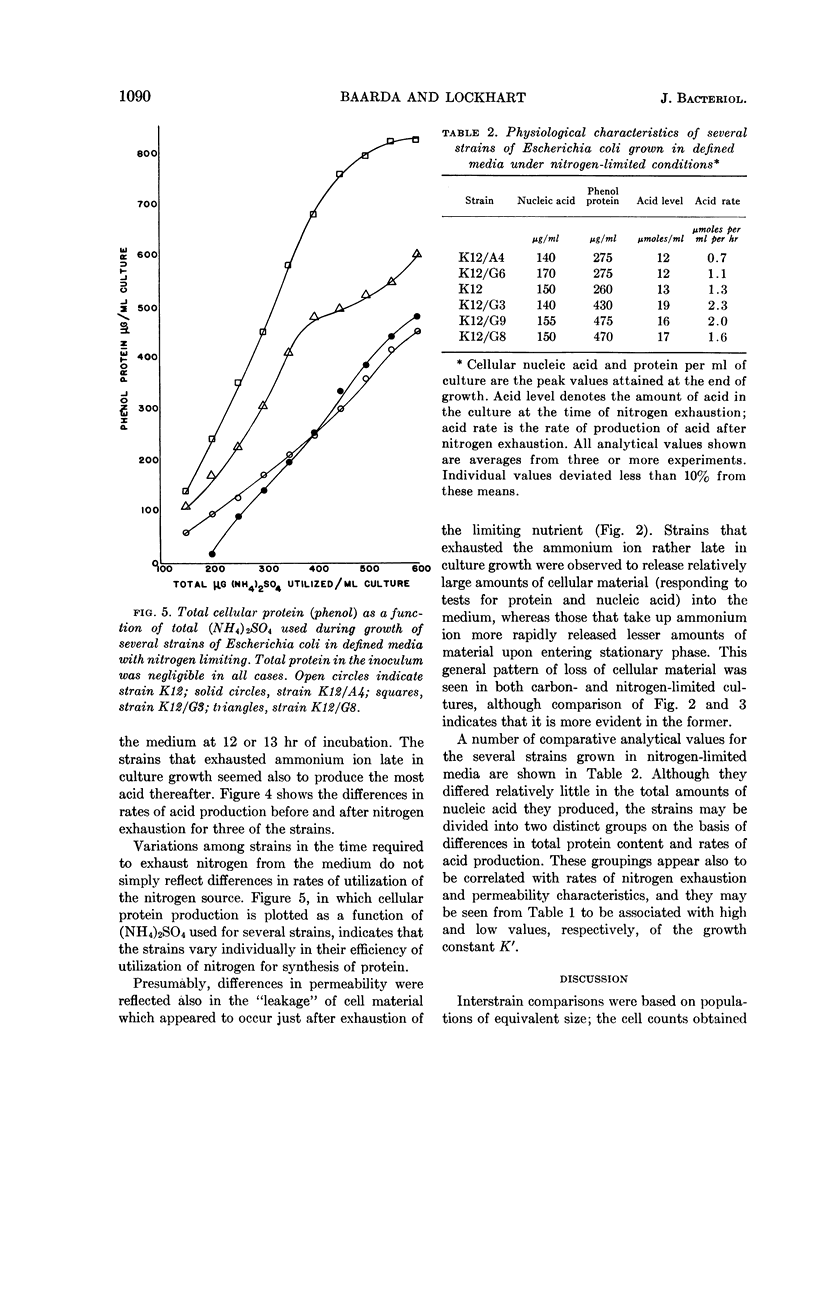
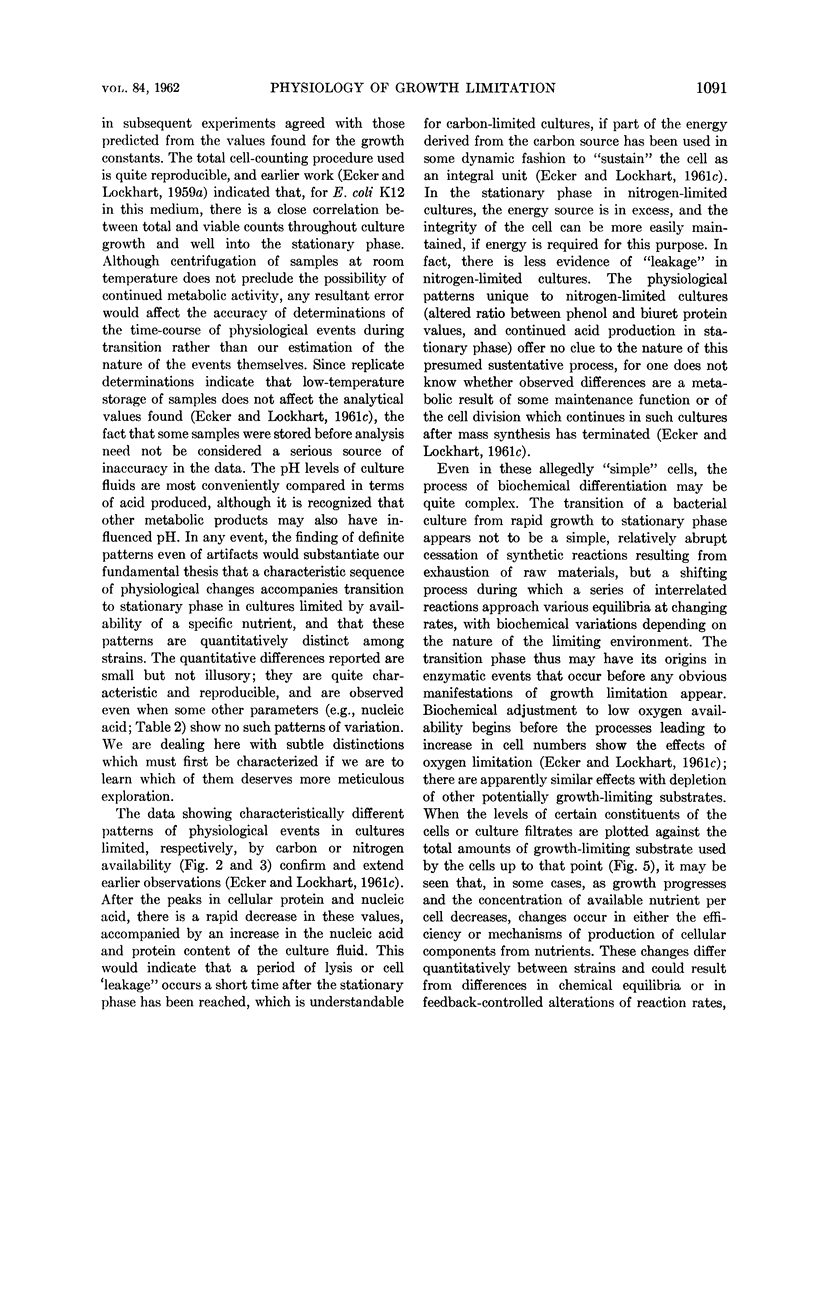
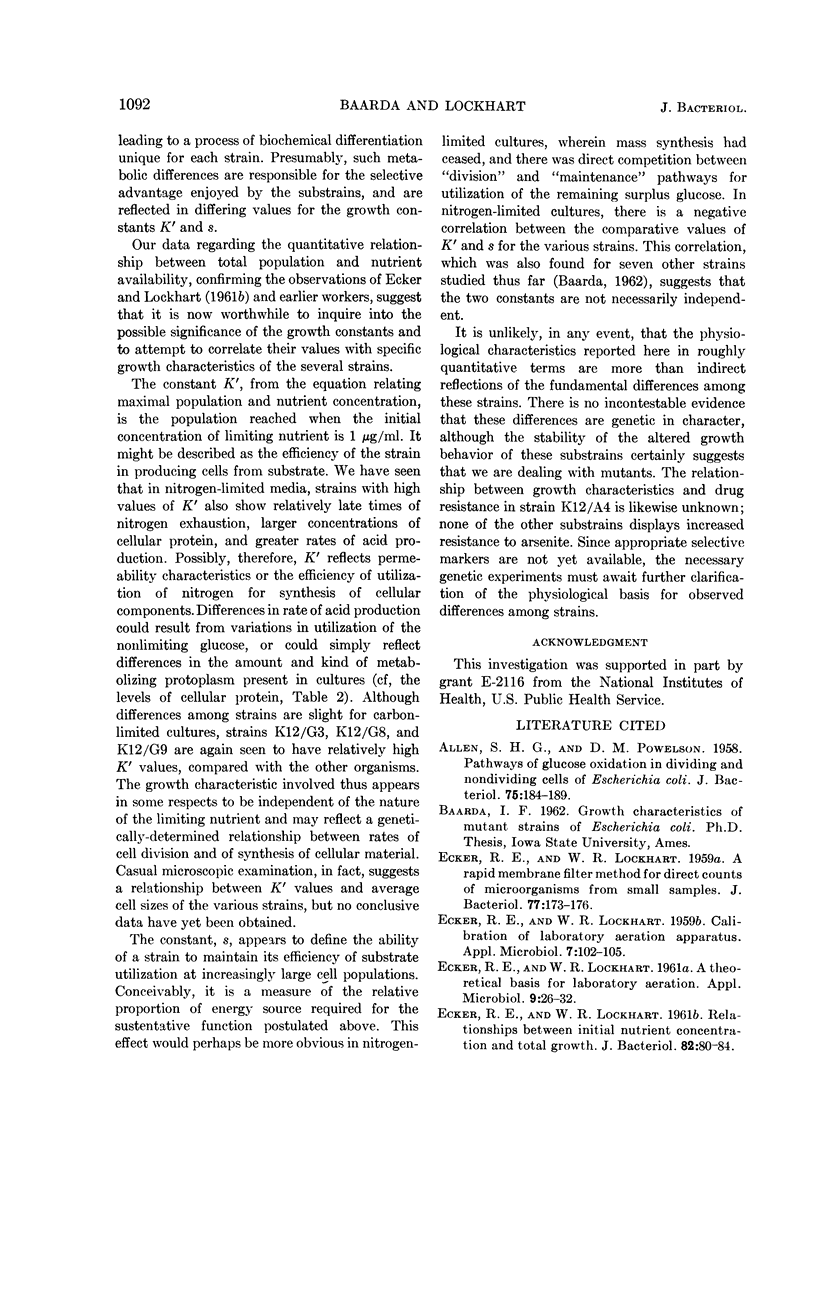
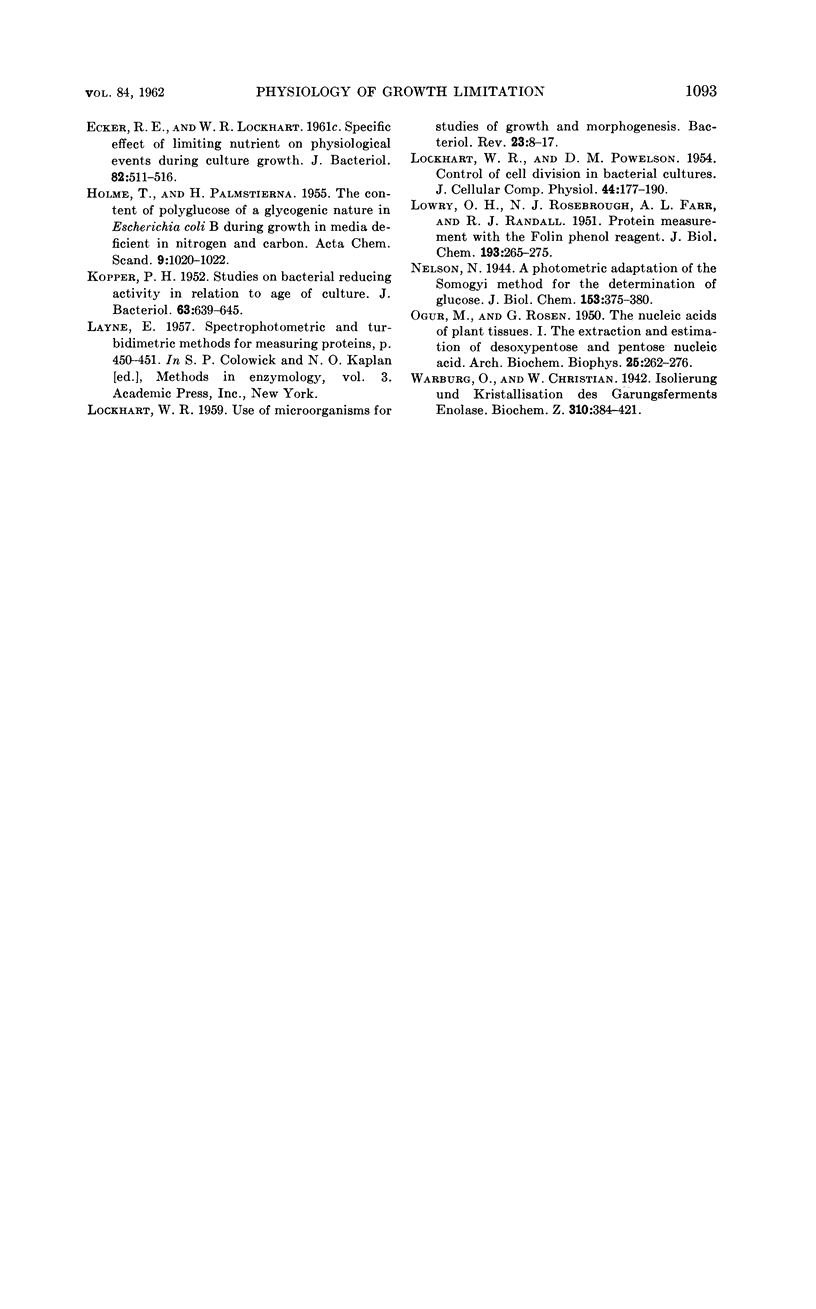
Selected References
These references are in PubMed. This may not be the complete list of references from this article.
- ALLEN S. H., Jr, POWELSON D. Pathways of glucose oxidation in dividing and nondividing cells of Escherichia coli. J Bacteriol. 1958 Feb;75(2):184–189. doi: 10.1128/jb.75.2.184-189.1958. [DOI] [PMC free article] [PubMed] [Google Scholar]
- ECKER R. E., LOCKHART W. R. A rapid membrane filter method for direct counts of microorganisms from small samples. J Bacteriol. 1959 Feb;77(2):173–176. doi: 10.1128/jb.77.2.173-176.1959. [DOI] [PMC free article] [PubMed] [Google Scholar]
- ECKER R. E., LOCKHART W. R. Calibration of laboratory aeration apparatus. Appl Microbiol. 1959 Mar;7(2):102–105. doi: 10.1128/am.7.2.102-105.1959. [DOI] [PMC free article] [PubMed] [Google Scholar]
- ECKER R. E., LOCKHART W. R. Relationships between initial nutrient concentration and total growth. J Bacteriol. 1961 Jul;82:80–84. doi: 10.1128/jb.82.1.80-84.1961. [DOI] [PMC free article] [PubMed] [Google Scholar]
- ECKER R. E., LOCKHART W. R. Specific effect of limiting nutrient on physiological events during culture growth. J Bacteriol. 1961 Oct;82:511–516. doi: 10.1128/jb.82.4.511-516.1961. [DOI] [PMC free article] [PubMed] [Google Scholar]
- KOPPER P. H. Studies on bacterial reducing activity in relation to age of culture. J Bacteriol. 1952 May;63(5):639–645. doi: 10.1128/jb.63.5.639-645.1952. [DOI] [PMC free article] [PubMed] [Google Scholar]
- LOCKHART W. R. Use of microorganisms for studies of growth and morphogenesis. Bacteriol Rev. 1959 Mar;23(1):8–17. doi: 10.1128/br.23.1.8-17.1959. [DOI] [PMC free article] [PubMed] [Google Scholar]
- LOWRY O. H., ROSEBROUGH N. J., FARR A. L., RANDALL R. J. Protein measurement with the Folin phenol reagent. J Biol Chem. 1951 Nov;193(1):265–275. [PubMed] [Google Scholar]
- OGUR M., ROSEN G. The nucleic acids of plant tissues; the extraction and estimation of desoxypentose nucleic acid and pentose nucleic acid. Arch Biochem. 1950 Feb;25(2):262–276. [PubMed] [Google Scholar]


